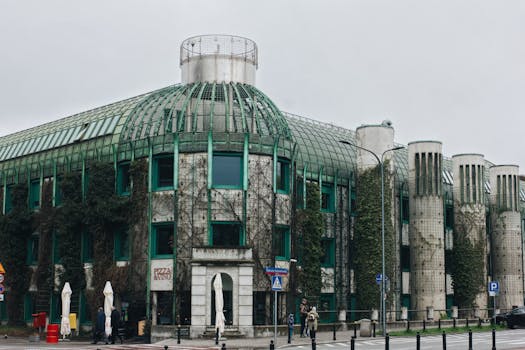
Sustainable Cities: How Europe is Shaping Eco-Friendly Lifestyles by 2025
Sustainable Cities are at the forefront of the global movement towards eco-friendly lifestyles, and Europe is taking the lead. By 2025, many European cities aim to significantly reduce their environmental footprint, promoting green infrastructure, renewable energy, and sustainable transportation. In this article, we will explore the initiatives and innovations that are shaping the future of sustainable cities in Europe.
Introduction to Sustainable Cities
Sustainable cities are designed to minimize their impact on the environment, while improving the quality of life for their citizens. This is achieved through a combination of green infrastructure, such as parks and green roofs, renewable energy sources, and sustainable transportation systems. European cities are investing heavily in these initiatives, with the goal of reducing their carbon footprint and creating a healthier, more livable environment for their citizens.
Green Infrastructure in European Cities
Green infrastructure is a critical component of sustainable cities, providing numerous benefits for both the environment and human health. European cities are incorporating green spaces, such as parks, gardens, and green roofs, into their urban planning. These spaces help to reduce air pollution, mitigate the urban heat island effect, and provide habitats for urban wildlife. Additionally, green infrastructure can help to manage stormwater runoff, reducing the risk of flooding and improving water quality.
Risk Management and Challenges
While European cities are making significant progress in sustainable development, there are still challenges to be addressed. One of the major risks is the potential for green infrastructure to be underutilized or poorly maintained, which can lead to a range of problems, including increased maintenance costs and decreased public acceptance. To mitigate these risks, cities must develop effective management and maintenance strategies, ensuring that green infrastructure is integrated into the urban fabric and provides long-term benefits for citizens.
Case Studies: Sustainable Cities in Europe
Copenhagen, Denmark, is a prime example of a sustainable city in Europe. The city has set a goal of becoming carbon neutral by 2025 and is investing heavily in green infrastructure, including parks, green roofs, and bike-friendly roads. Additionally, Copenhagen is home to a number of innovative sustainable transportation systems, including electric buses and a comprehensive bike-share program.
Another example is Barcelona, Spain, which has implemented a range of sustainable initiatives, including a green roof program and a bike-share system. The city has also invested in renewable energy, with a goal of generating 50% of its energy from solar power by 2025.
Conclusion
In conclusion, European cities are leading the way in sustainable development, promoting eco-friendly lifestyles, and reducing their environmental footprint. By investing in green infrastructure, renewable energy, and sustainable transportation, cities can create a healthier, more livable environment for their citizens. As we move forward, it is essential that cities continue to innovate and adapt, addressing the challenges and risks associated with sustainable development and ensuring a bright, sustainable future for generations to come.






